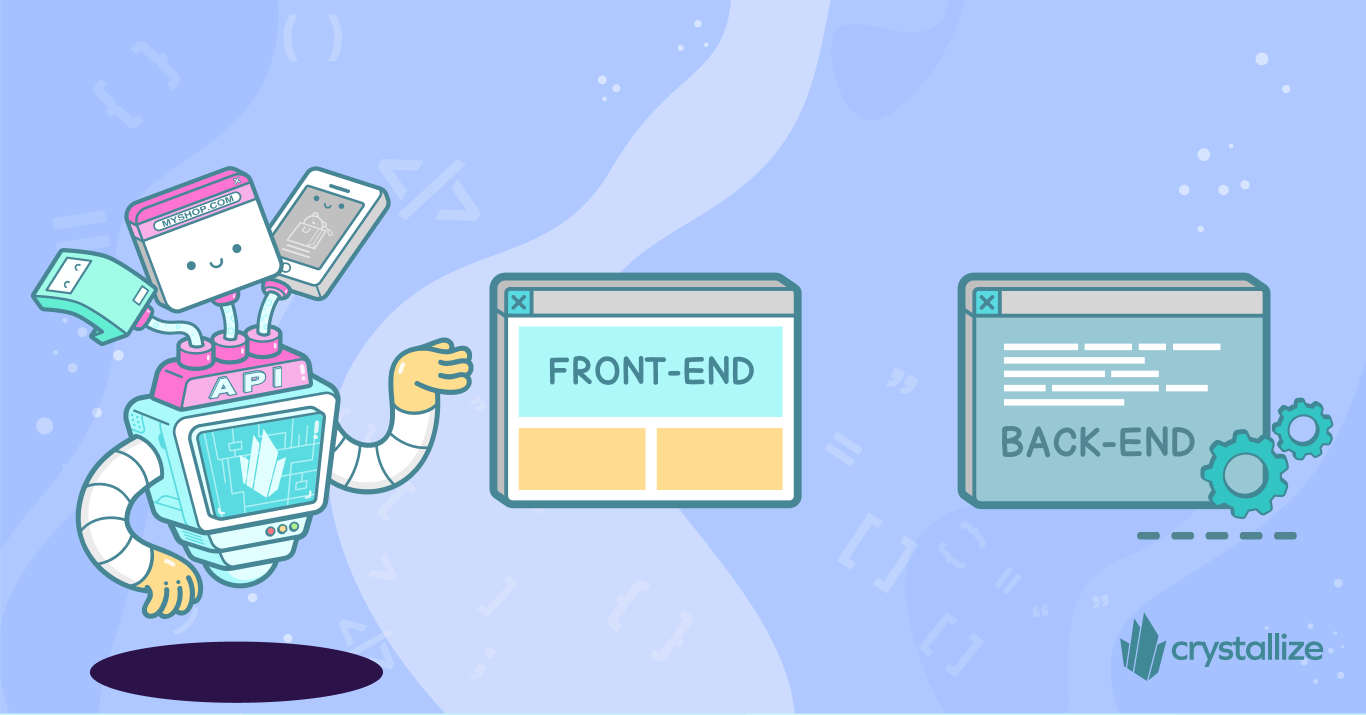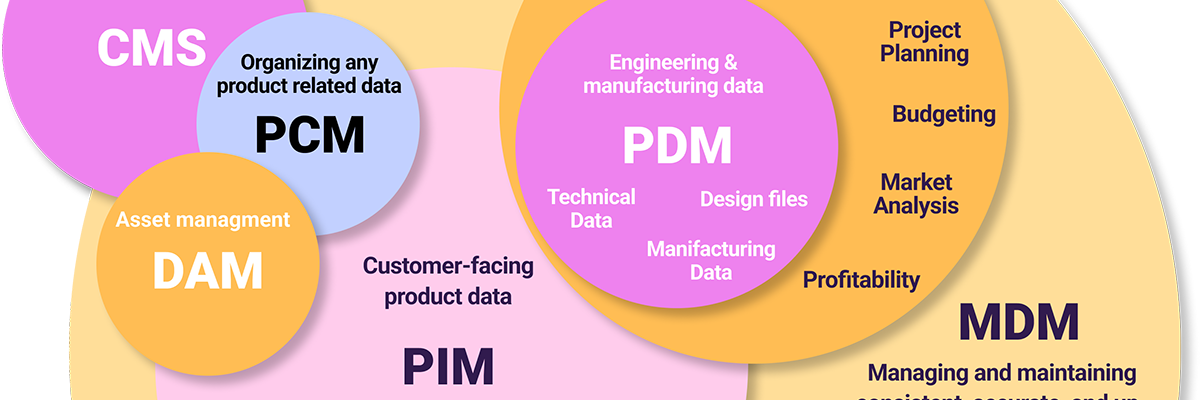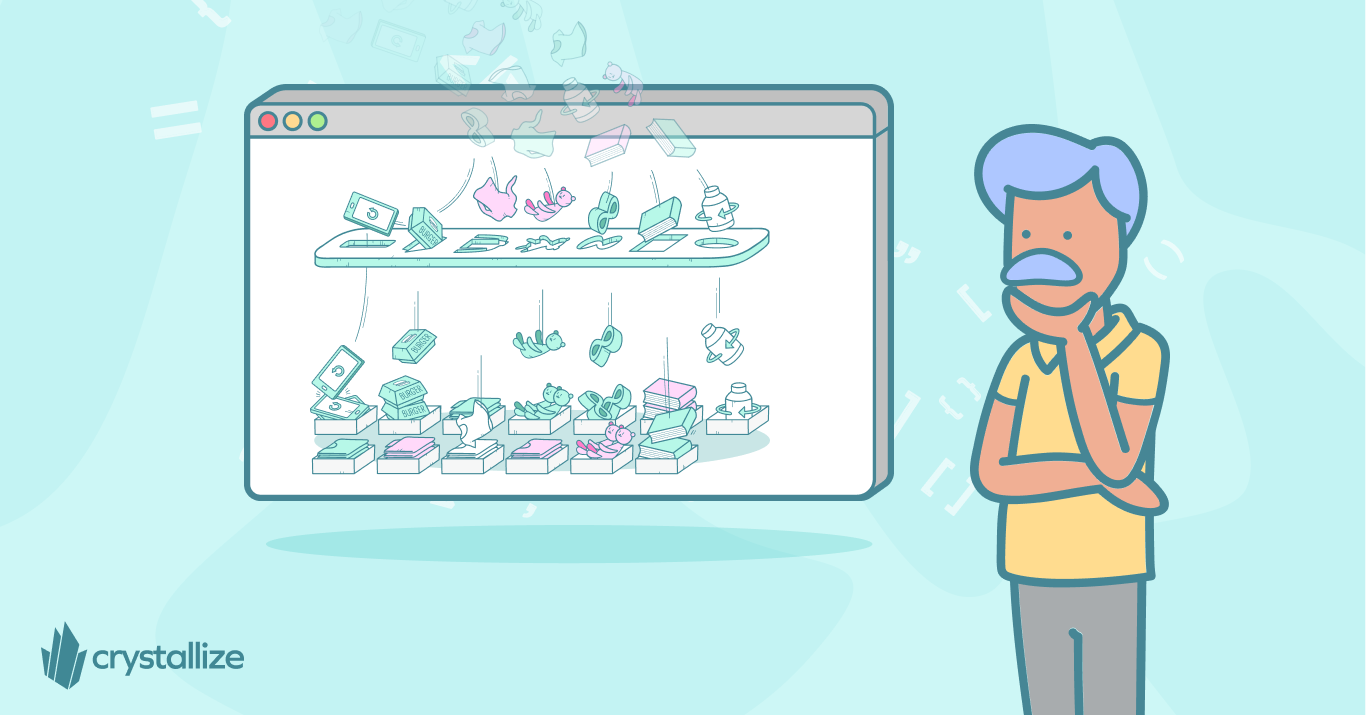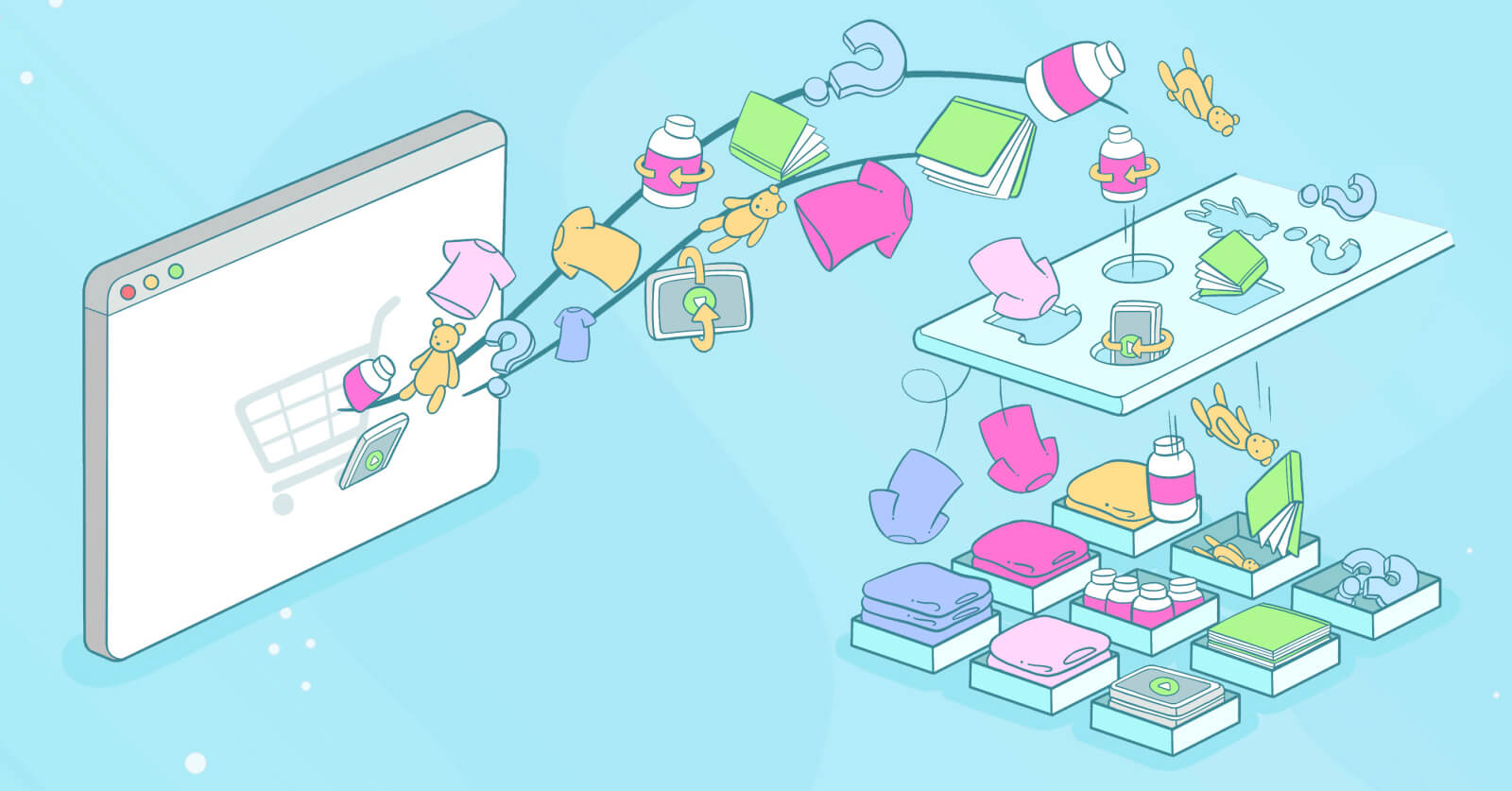Understanding Product Information Management (PIM) Done Headless
A headless approach to PIM means having a service ready to manage product information in seconds. Product information and content are delivered via an API. There are no templates, no web pages, only structured content—pure developer bliss.

A headless Product Information Management (PIM) system represents an evolution in how businesses manage and distribute product data. Unlike traditional PIM systems, a headless PIM decouples product information management in the back end (the services layer) from the front end (the presentation layer). This allows businesses to manage product information centrally and distribute it seamlessly across various platforms, providing greater flexibility, scalability, and adaptability to rapidly changing market demands.
It is no wonder that headless PIM is a trend. In fact, 60% of retailers believe a headless PIM architecture (where the back-end data management is decoupled from the front-end presentation) offers greater flexibility and scalability for their business (source: PIM stats for 2025).

Headless PIM For Your Business
So, what is headless PIM? Headless PIM enables developers to build tailored e-commerce experiences using the front-end framework of their choice. It relies on a headless architecture, and it is a perfect match for businesses that want to future-proof their product information, quickly change their front end, or add e-commerce channels. For a more detailed understanding of PIM, refer to our comprehensive guide: What is PIM, and How Does Product Information Management Work?
Remember that a good product information management service lets you define products however you like and keep them structured, organized, and easily managed.
Headless PIM For Your Business
So, what is headless PIM? Headless PIM enables developers to build tailored e-commerce experiences using the front-end framework of their choice. It relies on a headless architecture, and it is a perfect match for businesses that want to future-proof their product information, quickly change their front end, or add e-commerce channels. For a more detailed understanding of PIM, refer to our comprehensive guide: What is PIM, and How Does Product Information Management Work? Remember that a good product information management service lets you define products however you like and keep them structured, organized, and easily managed.
Key Features and Benefits Summarized
As the first and original headless PIM platform, we'd like to discuss it in depth here and explore key features and benefits, including data modeling, information architecture, digital asset management, access control, data quality, and governance.
Features
A headless PIM uses APIs to dynamically distribute product information. This allows the back-end and front-end to operate independently, providing flexibility to adapt to new sales channels, integrate with third-party services, and update product information in real-time.
A decoupled front-end allows businesses to create, innovate, and deliver unique user interfaces using their preferred front-end frameworks without being constrained by the back-end system. It is ideal for companies that want to future-proof their product information, quickly change their front end, or add new e-commerce channels.
Modularity also allows businesses to add or modify features without disrupting operations. This flexibility ensures that the PIM system can adapt to changing business needs and technological advancements, providing a future-proof solution for product information management.
Going headless emphasizes seamless integration with various systems. For PIM, that usually means integration with Content Management Systems (CMS), Digital Experience Platforms (DXP), and e-commerce platforms. This ensures product information can be synchronized across different channels, providing a consistent and personalized customer experience. For example, integrating a headless PIM with an e-commerce platform enables real-time updates to product information, enhancing the shopping experience.
Benefits
Adopting a headless PIM approach offers numerous advantages that align with modern businesses' dynamic needs. With centralized, structured product information, businesses can swiftly adapt to market changes and introduce new products across channels without delay. This agility is crucial for staying competitive in fast-paced markets.
Developers benefit from the flexibility of a headless PIM, which allows them to work with preferred front-end technologies and frameworks. This autonomy increases productivity and job satisfaction, as developers can create custom, innovative user experiences without being constrained by a monolithic system.
Delivering accurate and up-to-date product data to various channels, including websites, mobile apps, and IoT devices, ensuring customers receive a cohesive brand message regardless of the touchpoint.
Finally, with a headless PIM, businesses are not tied to a specific front-end or back-end solution, reducing dependency on a single vendor.
🔍Compare Crystallize with other leading PIM platforms!
At Crystallize, we believe in providing everything you need to showcase your products seamlessly across all channels by combining PIM, commerce, and CMS functionality.
We know that one size doesn’t fit all, so we’ve created tech comparison pages to give you a transparent overview of how we stack up against top PIM, commerce, and CMS platforms. These comparisons are designed to help you evaluate features, ease of use, value, and customer support.
Take your time to explore the options👇 We're here to provide the information—the choice is yours!
|
| |||
|
| |||

Implementation Best Practices and Integration
Getting a headless PIM up and running requires careful planning and execution. While each PIM platform has its own quirks and implementation steps, there are some general considerations, such as data modeling, system integration, API management, and developer support.
Let's examine these from the Crystallize point of view.
Data / Content Modeling and Structure
Effective data/content modeling is fundamental to implementing a headless PIM system like Crystallize. It involves designing a flexible and scalable data structure that aligns with business objectives and supports diverse product information needs.
Crystallize emphasizes a structured approach to content modeling, defining the components of your product information and marketing content. The process begins with identifying all content types used across different channels, such as product pages, marketing materials, and app content.
Next, it involves recognizing similarities among content types to streamline data management. Identifying repeating information helps create reusable components, and defining relationships establishes connections between different content types, enhancing data coherence.
It is a massive topic in its own right. We urge you to check the content modeling series here at Crystallize:
Content Modeling Explained > Content Modeling Step-by-Step Guide (with Examples) > Content Modeling Tools (read all three articles).
Don't forget that establishing stringent data governance policies is vital for maintaining data quality and consistency. This involves setting data entry, validation, and maintenance standards, ensuring that all product information is accurate, up-to-date, and accessible.
Connecting with Existing Systems
What makes Crystallize unique is that it goes beyond being just a PIM. It beautifully integrates PIM, commerce, CMS, and subscription features, creating a cohesive product universe experience. Plus, Digital Asset Management (DAM) is an essential part of all these functionalities, enhancing everything it offers.
However, Crystallize's API-first approach enables seamless integration with other solutions you may need (such as Enterprise Resource Planning (ERP), Product Experience Management (PXM), or Customer Relationship Management (CRM)), ensuring that product data flows efficiently across all systems.
📑Managing Product Data and Tools You May Need Infographic.
What is PIM, and how different is it from commerce? Where do DAM and CMS overlap? And do you need PXM for your business use case? We’ve tried to clear up the confusion around acronyms in modern eCommerce with the following infographic, which provides a visual comparison of all relevant terms. Individual posts dig deeper into each term and its concept.
📝READ WHAT PIM IS AND DOWNLOAD THE INFOGRAPHIC FOR FREE FROM HERE

API Management and Security
APIs are crucial for connecting various systems and delivering content across platforms in a headless architecture. Crystallize provides comprehensive API management tools to ensure secure, reliable, and efficient data exchanges. Effective API management involves designing APIs that facilitate seamless communication among users, serverless functions, and other system components.
As you know, there are two approaches to API design, i.e., you can go the REST or GraphQL way—pros and cons on both sides. But instead of talking about them, let us explain which one we opted out of and how it helps our headless PIM approach.
GraphQL Instead of REST for Fast APIs
In eCommerce, product structures are inherently complex, and you manage structured products of many shapes, organized in a tree or grid.
For example, when building a shopping experience for a food website, you may typically end up with scenarios/pages like fetching five apples, two oranges, and the three latest cooking explainer videos.
This is where REST falls short. REST is typically designed to give you apples or an apple, not apples and oranges simultaneously. It is a single resource-focused protocol. GraphQL is designed for scenarios where you need to fetch many resources in a single request.
There are a few apparent benefits of GraphQL here:
- One query to fetch complex, structured data across multiple resources, i.e., a single round trip to the API, results in lower latency.
- Ask for just what you need. Transfer only what you need—smaller chunks of content.
- GraphQL describes what is possible with the API. A single endpoint for your complete service means faster developer ramp-up and fewer errors.
With all this in mind, we built a GraphQL PIM API that lets you select exactly which data you want transferred, resulting in smaller payloads.

Developer Onboarding and Training
Equipping development teams with the necessary skills and knowledge is vital for maximizing the benefits of a headless PIM. Crystallize supports developers by offering comprehensive onboarding resources (including our documentation and live streams, free to use), training, and certification.
But that's not enough. Hence, we host a yearly conference, the Product Universe, which includes two impactful tracks for strategists and tech wizards, Crystallize Awards, FREE Crystallize certification, and discounted tickets to React Norway.
Continuous Testing and Monitoring
Regular testing and monitoring of the PIM system and data help proactively identify and address potential issues.bug resolution.
Dive even deeper with our ▶️ Headless PIM with Crystallize LIVESTREAM series.

What’s Next: AI-Ready, Edge-Powered PIM
Headless PIM is no longer optional—it’s the foundation for AI-native, customer-first commerce. PIM platforms are already embedding generative AI and LLMs to automate enrichment, translation, and content creation. With headless architecture, these capabilities plug in seamlessly—no monolithic overhauls needed.
What’s next? Bringing product data even closer to your customers with edge delivery for faster, more personalized experiences across every channel.
If you're considering the shift to headless, we’re here to help.
👉 Book a personal 1-on-1 demo
🎯 Or try Crystallize for FREE and see what agile PIM really feels like.
FAQ: Headless PIM, Simplified
1. What is a headless PIM?
A headless PIM separates the back-end product data from the front-end presentation layer, letting you manage product information centrally and deliver it to any device via APIs—such as websites, apps, marketplaces, and more.
2. How is headless PIM different from traditional PIM?
Traditional PIMs often come with built-in front-ends or rigid templates. Headless PIMs are API-first and front-end agnostic, giving developers full control to build custom experiences across channels.
3. Who should use a headless PIM?
Headless PIM is ideal for businesses going omnichannel, building composable commerce stacks, or needing flexibility to scale fast—especially if your team wants full control over UX and tech stack.
4. Does Crystallize offer a headless PIM?
Yes. Crystallize is a headless PIM built for modern commerce, with an API-first approach, native support for structured content, and a flexible product storytelling model—ready for developers and fast-moving teams.
Follow the Rabbit🐰

Best PIM Platforms in 2025: Compare the Top 8 Solutions Side-by-Side
Discover the top 8 leading Product Information Management (PIM) platforms in 2025, their features, benefits, and how to choose the right solution for your business needs.

What is PIM, and Why Do You Need It?
Having solid product data isn't just about making sales; it's about building trust and driving growth. Many businesses are turning to Product Information Management (PIM) systems to meet these evolving needs.

Why/When to Go Headless (ROI and Suitability)?
Is headless commerce really beneficial (e.g., at what scale does it make sense, what are the pros vs. cons, and is it overkill for small companies)? Let's explore when headless commerce delivers real ROI, highlight the critical considerations, and help you decide if this strategic investment aligns with your brand goals.

